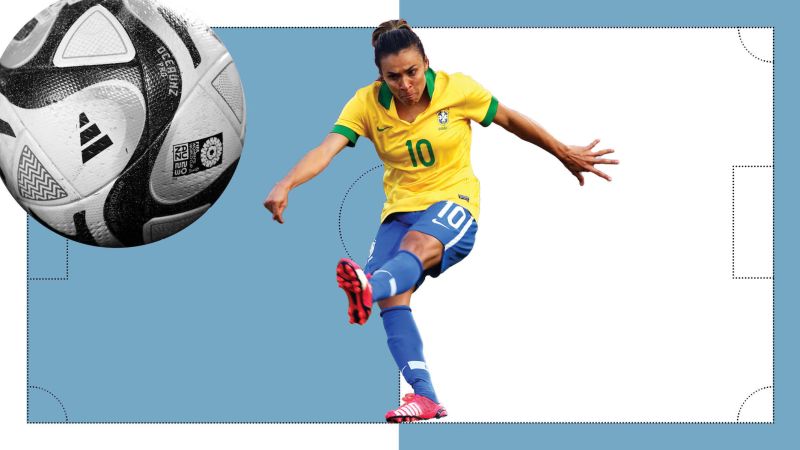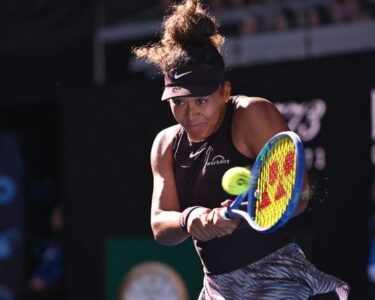CNN
—
“The defenders were always mad at her,” Sissi recalls with a chuckle. “You were like: ‘How are we going to stop this girl?’”
Out of the thousands of training sessions the former Brazil international took part in over the course of her 13-year career, there is one in particular that stands out.
Back in 2000, when Sissi was playing with Rio de Janeiro-based club Vasco da Gama, the team’s Under-15 squad was called up to play in a training match against the seniors.
Among them was a little forward by the name of Marta Viera da Silva, who nobody initially paid much attention to – until they had to.
“Back then, I already knew that she had a gift, and it was hard [facing her],” Sissi tells CNN Sport. “Every time we scrimmaged, the girls had to stop her by going hard on her. She was very special.
“She used to be so good on the ball. It was almost like, close to the goal, she was always waiting for the defender to come for her to do a different move and sit people on the ground.
“It made us laugh. She was very special, very fast, very creative, but it was hard. It was hard for us.”
As a forward herself, Sissi says she was “glad” she never had to defend a 15-year-old Marta as the defenders “always got pissed” after facing her. She chuckles again at the memory.
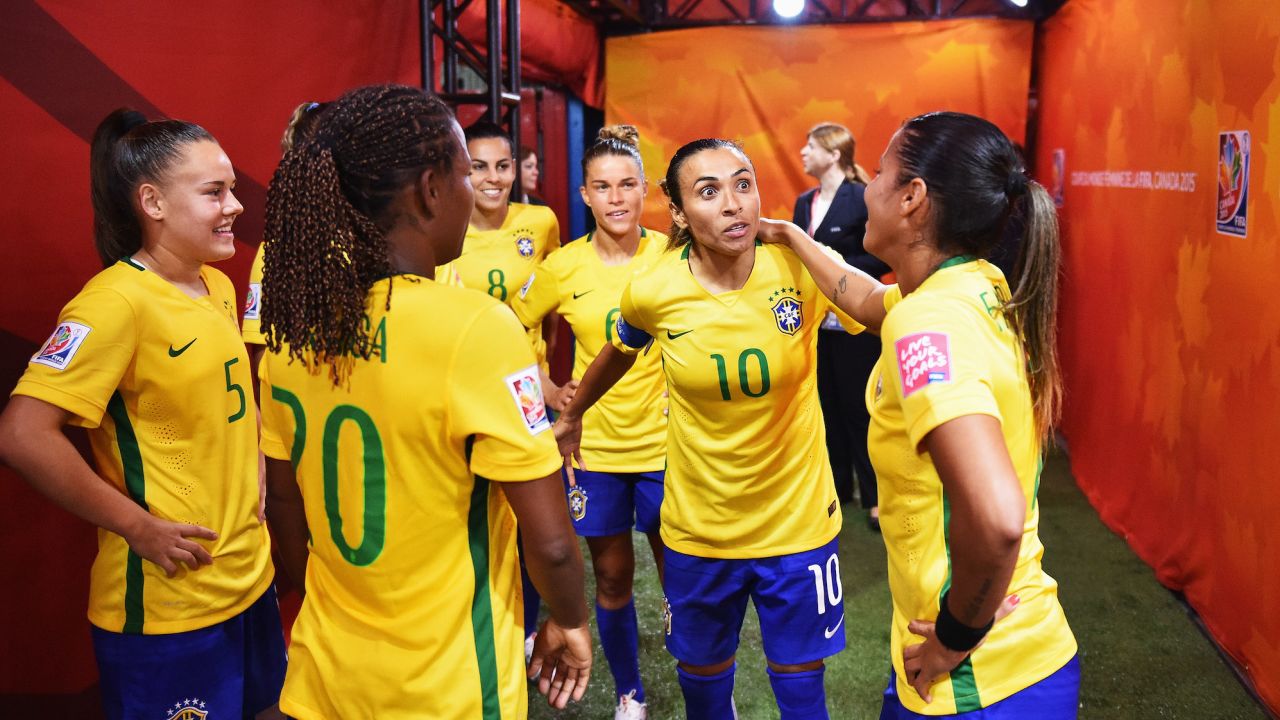
But if defending wasn’t Sissi’s strong suit, attacking certainly was. At the 1999 World Cup in the United States, Sissi earned the Golden Boot for finishing as the tournament’s joint top scorer and her stunning, match-winning free kick against Nigeria in the quarterfinals is one of the all-time great World Cup goals.
That tournament would go on to define her career and Sissi remains a much-loved figure in Brazil for her exploits in the national team’s famous yellow jersey, even thriving under the pressure that came with being handed the No. 10 shirt made famous by the great Pelé.
Sissi was at the peak of her powers when a young Marta gave her and her teammates the runaround and says it became evident very quickly – perhaps even as early as that first training session – that the teenager would go on to become a star for Brazil’s women’s national team.
‘You talk about Pelé, you talk about Marta’
But even if Sissi predicted Marta’s path to the national team, she surely couldn’t have imagined the little girl from that training session would go on to achieve all that she has.
Marta, now 37 and playing in what will be her sixth and final World Cup, is considered by many – perhaps even most – to be the greatest female footballer of all time.
She has won the FIFA Player of the Year award an unprecedented six times – no other women’s player has won it more than three times – including five years in a row from 2006 to 2010 and is Brazil’s all-time record goalscorer, male or female, with 115 goals.

She has also lifted the Champions League, the Copa Libertadores and was awarded the Golden Boot and Golden Ball for top scorer and best player at the 2007 World Cup. In 2019, Marta became the first male or female player in history to score at five World Cups and her 17 World Cup goals are an all-time record in men’s and women’s football.
She has won the Copa América Femenina three times, but the only achievement missing from a glittering CV is a major global title with her beloved national team. Three times Marta has come agonizingly close to glory with Brazil, losing the 2007 World Cup final to Germany and twice suffering defeat in the Olympic gold medal match.
Sissi says Marta has meant “everything” to As Canarinhas during her 21-year international career, pushing the team to new heights and becoming a reference point for people all over the country.
“She’s an icon,” Sissi says. “She has been a mentor for a lot of kids.
“My generation, we did not have female players to look up to, so now to have players like her, especially with what she achieved and who she became, it’s very important. You already saw how much the game changed in Brazil. Now, people can say: ‘I want to be like Marta.’
“We have to enjoy her as much as we can … because I don’t think there will be another Marta, that’s for sure. She’s already made a huge impact, not only in Brazil, but I think all over the world. Everybody knows who she is, so I am very proud as a Brazilian. Very proud.”
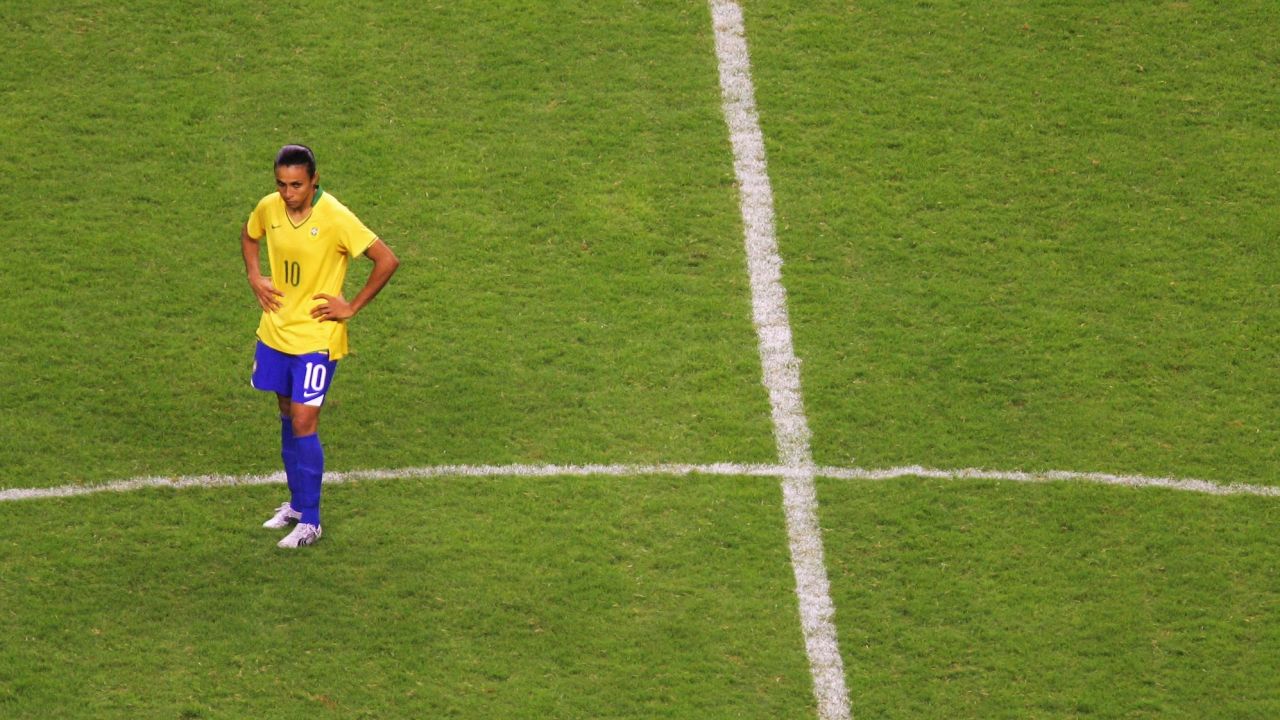
The ‘complete’ player
As Marta began to emerge as a bonafide star in the women’s game during the early to mid 2000s, Brazil’s men’s national team was awash with superlative talents: Ronaldo, Ronaldinho, Rivaldo, Cafu, Roberto Carlos and Dida were just some of the world class names who lifted the World Cup in 2002.
Marta certainly fitted the mold of the stereotypical Brazilian footballer of that time: a velvet touch, a slick passer and technically close to perfection. She is as adept at providing goals as she is scoring them, a genuine all-around player with very few weaknesses in her game.
Though Marta has scored countless memorable goals throughout her illustrious career, the one that perhaps encapsulates her game better than any other came during Brazil’s 4-0 rout of a United States Women’s National Team that was unbeaten in 51 games – almost three years – heading into the 2007 World Cup semifinals.
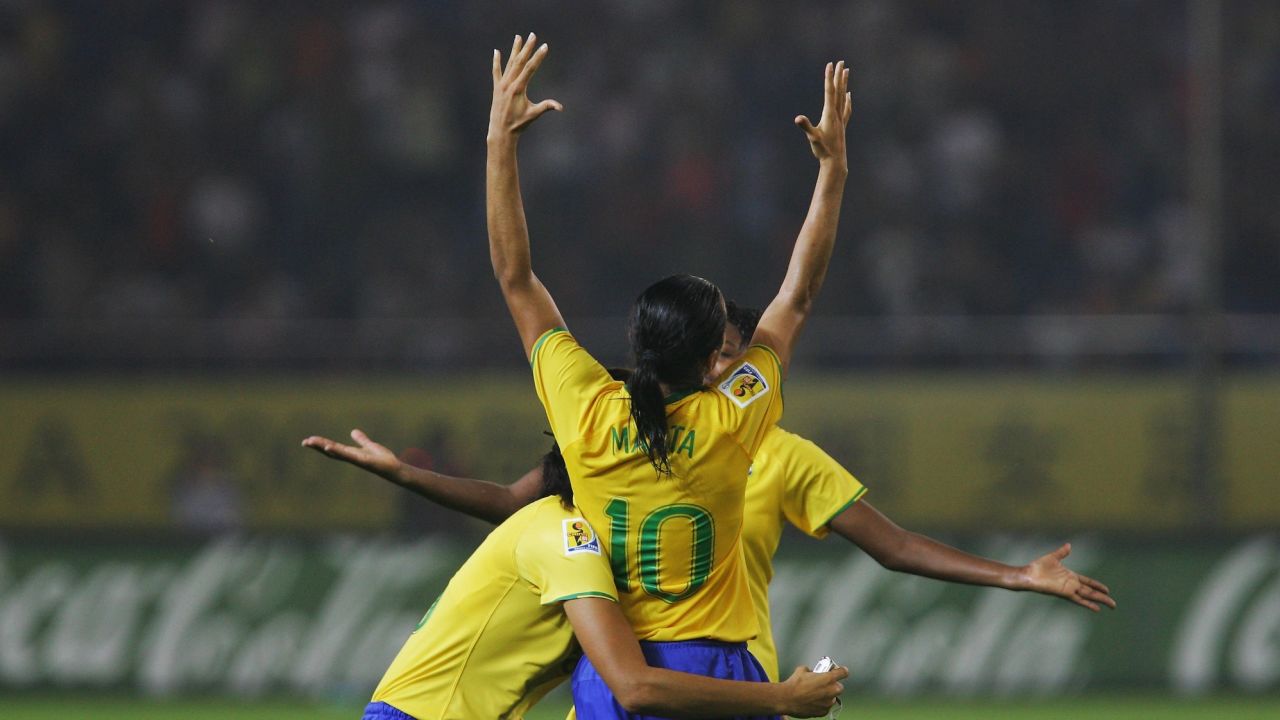
With her back to goal around five yards from the corner of the 18-yard box, Marta took one touch with her right foot to control a bouncing pass, before instantly using her left to flick it past defender Tina Ellerston.
She span into the penalty area as Ellerston desperately tried – and failed – to grasp her shirt, collected the ball and cut inside another defender, almost dropping her to the floor. Marta then drilled her low effort past the goalkeeper, who got a hand to the ball but not enough to stop it from nestling in the back of the net.
The mix of instinctive ingenuity, balance, control and ruthlessness in front of goal was a marvel to watch and that complete mastery of ball and body is a rare sight in soccer.
Juca Kfouri, one of Brazil’s most decorated commentators, says Marta’s game was unrivaled in Brazilian soccer, even in an era when the country was especially blessed with some of the greatest men’s players in its history.
“There was a moment in Brazil in the first decade of the 21st century when, despite Brazil having players like Ronaldo O Fenômeno and Ronaldinho Gaúcho, Marta was the person born in Brazil who had the best control of all the basics of the game,” Kfouri told CNN Sport.
“All of them: passing, shooting, heading, vision of the game, shooting left and right [footed]. She was more complete as a football player than geniuses like the two Ronaldos or Rivaldo, who were also voted the best players in the world at that time.

“We find it difficult to compare Pelé with any other football player, regardless of gender, but I think that Marta’s comparison with the Ronaldos, with Rivaldo fits in this aspect. If you look at Marta’s mastery of the fundamentals of the game, she was closer to perfection in that regard than those players.”
But even the great Pelé himself welcomed the comparisons, famously dubbing Marta “Pelé in skirts.”
Changing the game
However, Marta’s impact hasn’t just been limited to the pitch; in fact, she has leveraged her on-field exploits to help create better conditions for female soccer players across the country.
From 1941 to 1979, it was illegal for women to play soccer in Brazil, a law that Sissi ignored as a child to play with the boys in the streets of her hometown. By the time Marta was emerging as one of the world’s brightest prospects, the women’s game in Brazil was still nascent after years of neglect.
Marta’s profile as the best the player in world for much of her career has forced authorities in the country to take women’s soccer more seriously, investing time and resources into both the national team and domestic league.
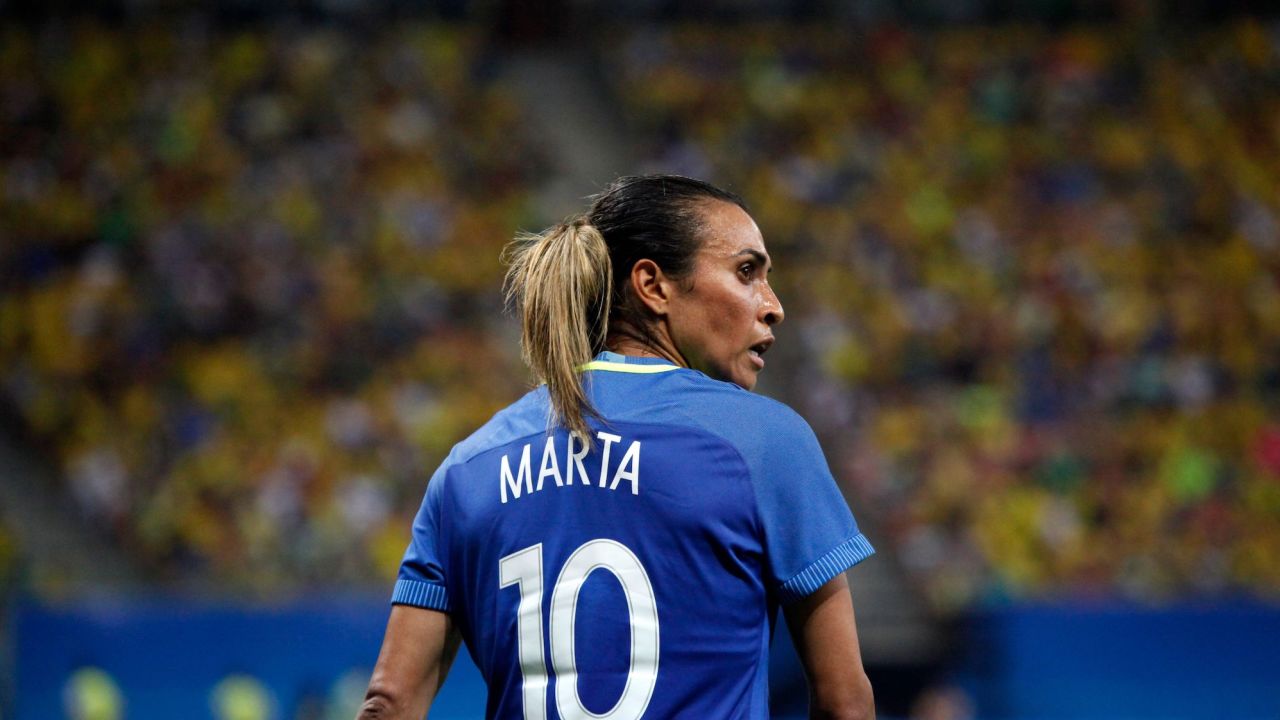
Sissi says Marta’s “strength to speak up” was crucial to women’s soccer in Brazil having the structure it does today.
“That’s something she’s still fighting for,” Sissi says.
Marta mania in Brazil perhaps reached its peak during the 2016 Olympic Games in Rio de Janeiro. As the men’s national team, led by Neymar, struggled at the tournament, the women’s side and it talismanic captain Marta got off to a flying start.
While both players wear Brazil’s famous No. 10, fans quickly realized that only Neymar’s jersey was easily available to purchase across the country. This led to countless fans taking matters into their own hands, as they crossed out Neymar’s name and wrote ‘Marta’ themselves in pen on the back of the shirts.
Even as recently as this year, a project was approved in Alagoas, Marta’s home state, to change the name of the ‘King Pele Stadium’ to ‘Queen Marta Stadium,’ though the change has yet to be sanctioned.
After Brazil was eliminated from the 2019 World Cup, Marta – wearing deep red lipstick, which she said was to show her readiness to “leave blood on the pitch” – gave an impassioned speech to the cameras.
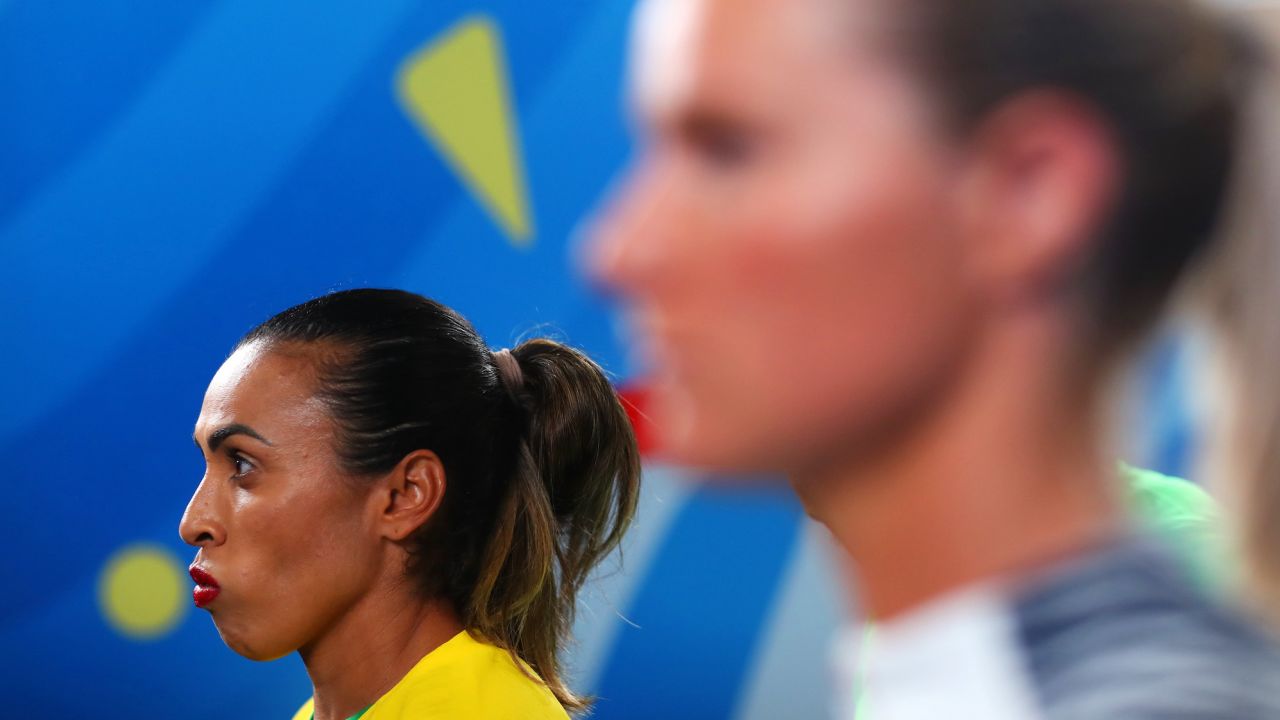
She pleaded with young girls in Brazil to take up the mantle, saying there will not be “a Marta forever.”
“Women’s football is relying on you to survive. Think about it, value it more. Cry in the beginning to smile at the end,” she said.
Kfouri says moments such as these exemplify how Marta has carried the “fragility of women’s football in Brazil” on her back almost single-handedly throughout her career.
“Marta is something phenomenal,” Kfouri adds. “Because you think of someone who was voted the best player in the world six times, in a country where women’s football never had support and, on the contrary, for many years it was forbidden that women play football. It’s startling the fact there was a Marta in Brazil.
“She was fundamental for the existence of a Brazilian soccer team and for it to end up having the recognition it has today. If it weren’t for Marta, women’s football in Brazil would probably still be a very incipient thing.
“She was and is a very valuable figure, I have no doubts saying that, as an athlete and as a citizen.”


